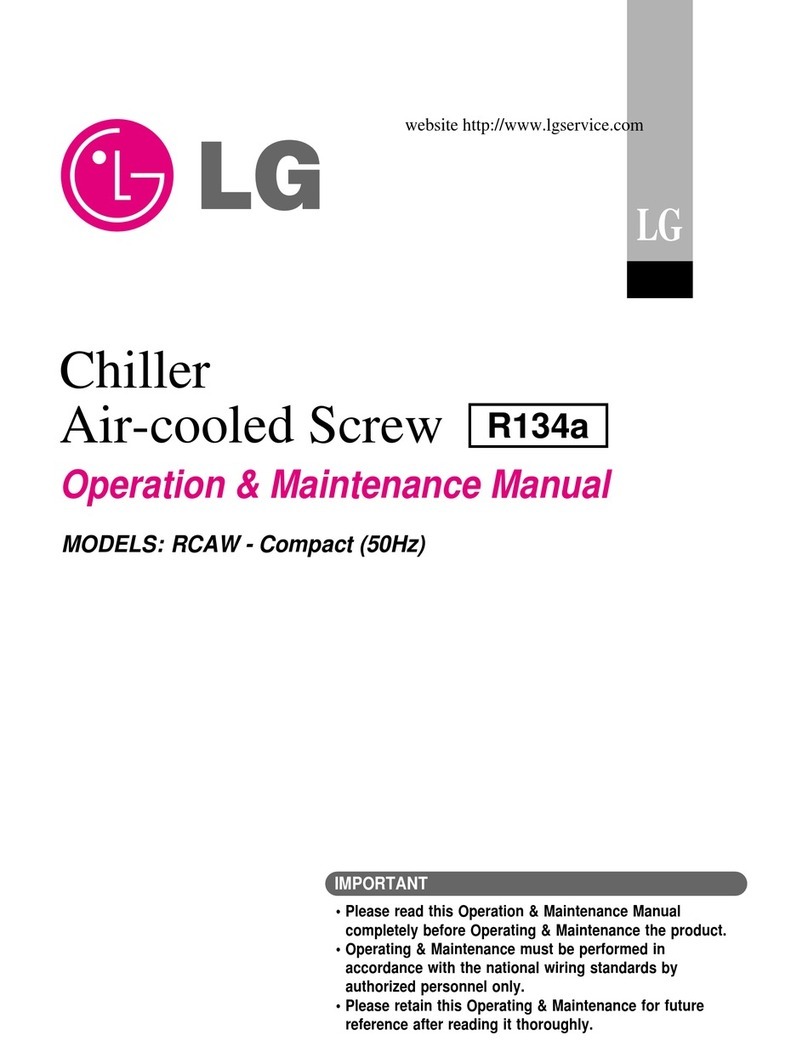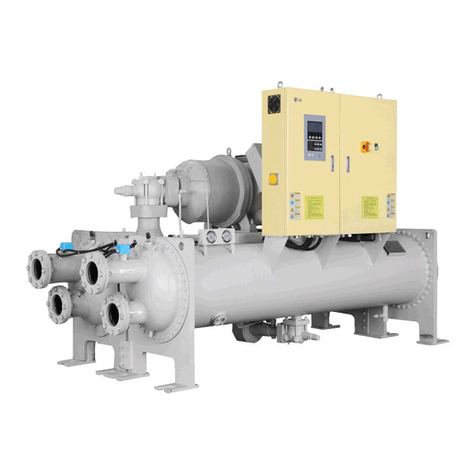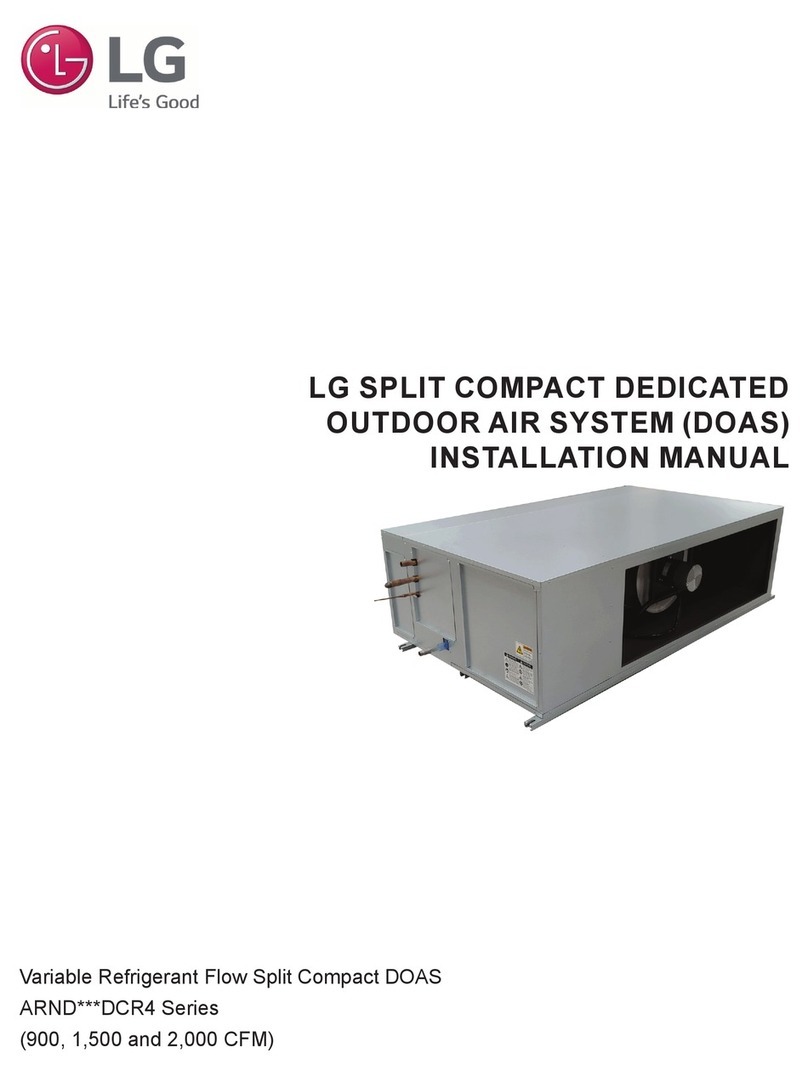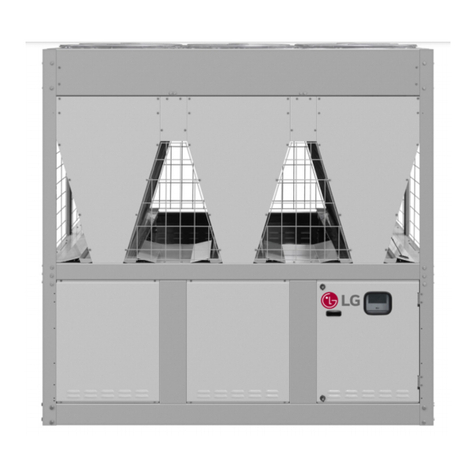ENGLISH
4
• Installing the product in small space requires separate measures to keep the leakage of the refrigerant within the
safety limits in case of any leakage.
- Consult the authorized dealer for appropriate measures to prevent the refrigerant leakage from exceeding the
safety limits. The leakage of refrigerant exceeding the safety limit may result in dangerous situations due to the
lack of oxygen level in the room.
• Securely install the cover of control box and the panel.
- If the cover and panel are not installed securely, dust or water may enter the unit and fire or electric shock may re-
sult.
• Do not operate the unit arbitrarily.
- Incorrect operation of the unit may cause dangerous situations such as unit defects, leakage or electric shock. Al-
ways consult the authorized dealer.
• Do not use damaged circuit breaker or fuse works correctly all the time.
- It may cause fire, electric shock or injury.
• Keep the control panel from any water getting in.
- Do not wash the control panel with water. It can cause electric shock or defects.
• When the product is soaked (flooded or submerged), contact an Authorized Service Center.
- There is risk of fire or electric shock.
• Use a dedicated outlet for this unit.
- There is risk of fire or electric shock.
• Make sure to charge only the exclusive refrigerant R134a when installing or moving to other place.
- If a different refrigerant or air is mixed with the original refrigerant, the refrigerant cycle may malfunction and the
unit may be damaged.
• Do not touch the power switch with wet hands.
- There is risk of fire, electric shock, explosion, or injury.
• Ventilate before operating the chiller unit when gas leaked out.
- Do not use a phone or operate the power switch at this time. It may cause fire or explosion.
• Do not put any heavy object on the top of the unit or climb on the unit.
- It may cause defects or injury.
• Be careful with the rotating part.
- Do not put your fingers or a stick to the rotating part. It can cause injury.
• Use the fuse and circuit breaker with rated capacity.
- It may cause fire and defects.
• Redesigning the control box is prohibited.
- Lock the control box with possible locking device and if you need to open the control box inevitably, turn off the
main power first.
• Do not touch the wiring or a parts inside the panel.
- It may cause electric shock, fire or defects.
• Follow the permitted pressure level
- Follow the regulated pressure for cold water, cooling water, refrigerant etc.
• Do not change the set values.
- Do not change the set values of the controller and safety devices. Operating with inappropriate setting can cause
damages. When changing the setting values, please consult with the specialist.
• Be careful of fire, earthquake and lightening.
- In case of any natural disaster such as fire, earthquake or lightening, immediately stop operating the unit. If you
continue to operate the unit, it can cause a fire or electronic shock.
• Follow all safety code.
- When operate the chiller, follow the precautions on the manual, tag, sticker and label.
• Use of undesignated refrigerant and oil is prohibited.
- Do not use undesignated refrigerant, freezer oil and brine. It may cause serious effect to the compressor and
parts defect.
• During the installation and service, shut down the power supply.
- Electric shock can cause injury and death. Mark and check all switches so that the power is not recovered until
the work is completed.


































